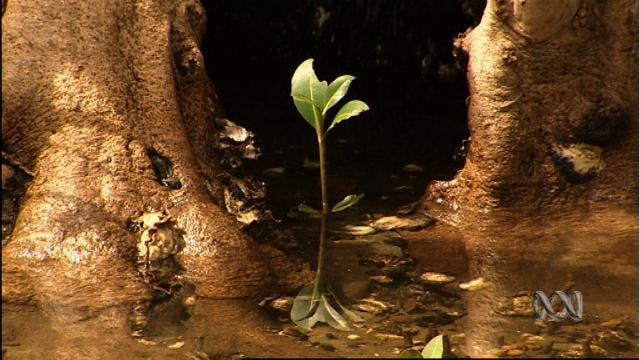Space to play or pause, M to mute, left and right arrows to seek, up and down arrows for volume.
SUBJECTS: Science
YEARS: 3–4, 5–6
Imagine a plant that lives in mud and is soaked in sea water twice a day.
Find out how mangroves thrive in conditions that would kill other plants.
View the amazing adaptations that make mangroves such special plants.
Things to think about
- 1.What would happen to plants in your garden if they were watered with salt water? A mangrove plant lives in an area flooded by ocean tides that make water levels rise and fall. What would the mangrove plant need to live in this environment?
- 2.How are mangroves different from the plants in your garden? See how mangrove roots get the air they need when they grow in thick, swampy mud? How might they get rid of salt from the water in their stems and leaves? Notice the different types of animals that live in and around the mangroves.
- 3.Did you notice that only mangrove plants grew in this habitat with its changing water levels? What adaptations (features) do mangroves have that help them survive in this habitat? How many different types of animals did you observe? How might the different animals depend on mangrove plants?
- 4.Draw a mangrove tree, showing its roots, seeds and the other ways this tree survives. The clip suggests that the plant deals with its salty habitat by moving salt from sea water into its leaves, causing them to yellow and drop off. Some scientists have other ways to explain how mangrove plants deal with salt. See what you can find out.
Date of broadcast: 16 Sep 2003
Copyright
Metadata © Australian Broadcasting Corporation 2020 (except where otherwise indicated). Digital content © Australian Broadcasting Corporation (except where otherwise indicated). Video © Australian Broadcasting Corporation (except where otherwise indicated). All images copyright their respective owners. Text © Australian Broadcasting Corporation.
Posted